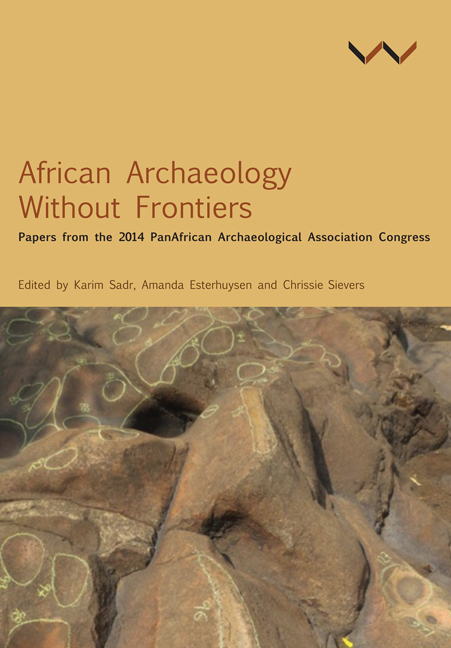72 results
Limiting empirical spectral distribution for the non-backtracking matrix of an Erdős-Rényi random graph
- Part of
-
- Journal:
- Combinatorics, Probability and Computing / Volume 32 / Issue 6 / November 2023
- Published online by Cambridge University Press:
- 31 July 2023, pp. 956-973
-
- Article
-
- You have access
- Open access
- HTML
- Export citation
Byzantium and Islam. Collected studies on Byzantine–Muslim encounters. By Daniel J. Sahas. Pp. xviii + 531. Leiden–Boston: Brill, 2022. €149. 978 90 04 47044 6
-
- Journal:
- The Journal of Ecclesiastical History / Volume 74 / Issue 3 / July 2023
- Published online by Cambridge University Press:
- 05 July 2023, pp. 652-653
- Print publication:
- July 2023
-
- Article
- Export citation
SHEA/IDSA/APIC Practice Recommendation: Strategies to prevent healthcare-associated infections through hand hygiene: 2022 Update
- Part of
-
- Journal:
- Infection Control & Hospital Epidemiology / Volume 44 / Issue 3 / March 2023
- Published online by Cambridge University Press:
- 08 February 2023, pp. 355-376
- Print publication:
- March 2023
-
- Article
-
- You have access
- Open access
- HTML
- Export citation
Memory and identity in the Syriac Cave of treasures. Rewriting the Bible in Sasanian Iran. By Sergey Minov. (Jerusalem Studies in Religion and Culture, 26.) Pp. xii + 411. Leiden–Boston: Brill, 2021. €198. 978 90 04 44550 5; 1570 078X
-
- Journal:
- The Journal of Ecclesiastical History / Volume 73 / Issue 1 / January 2022
- Published online by Cambridge University Press:
- 20 January 2022, pp. 132-135
- Print publication:
- January 2022
-
- Article
- Export citation
Empirically-identified subgroups of children with autism spectrum disorder and their response to two types of cognitive behavioral therapy
-
- Journal:
- Development and Psychopathology / Volume 35 / Issue 3 / August 2023
- Published online by Cambridge University Press:
- 06 December 2021, pp. 1188-1202
-
- Article
-
- You have access
- Open access
- HTML
- Export citation
Staffing in a Level 1 Trauma Center: Quantifying Capacity for Preparedness
-
- Journal:
- Disaster Medicine and Public Health Preparedness / Volume 16 / Issue 5 / October 2022
- Published online by Cambridge University Press:
- 15 September 2021, pp. 1990-1996
-
- Article
- Export citation
Miaphysites in Iraq during the Last Great War of Antiquity (c. 604–28) and its Aftermath
-
- Journal:
- The Journal of Ecclesiastical History / Volume 73 / Issue 1 / January 2022
- Published online by Cambridge University Press:
- 14 May 2021, pp. 20-37
- Print publication:
- January 2022
-
- Article
- Export citation
An MRI study of subjects in the prodromal phase of psychosis
-
- Journal:
- European Psychiatry / Volume 17 / Issue S1 / May 2002
- Published online by Cambridge University Press:
- 16 April 2020, pp. 16s-17s
-
- Article
-
- You have access
- Export citation
Chapter 6 - Changing Geographies
-
-
- Book:
- Historiography and Space in Late Antiquity
- Published online:
- 12 August 2019
- Print publication:
- 29 August 2019, pp 136-163
-
- Chapter
- Export citation
Empire, Church and society in the late Roman Near East. Greeks, Jews, Syrians and Saracens. (Collected Studies, 2004–14). By Fergus Millar . (Late Antique History and Religion, 10.) Pp. xxxiii + 807 incl. 15 figs and 8 maps. Leuven–Bristol, Ct: Peeters, 2015. €105. 978 90 429 3291 3
-
- Journal:
- The Journal of Ecclesiastical History / Volume 68 / Issue 4 / October 2017
- Published online by Cambridge University Press:
- 11 September 2017, pp. 830-833
- Print publication:
- October 2017
-
- Article
- Export citation
Frontmatter
-
- Book:
- African Archaeology Without Frontiers
- Published by:
- Wits University Press
- Published online:
- 15 March 2018
- Print publication:
- 31 December 2016, pp i-iv
-
- Chapter
- Export citation
Index
-
- Book:
- African Archaeology Without Frontiers
- Published by:
- Wits University Press
- Published online:
- 15 March 2018
- Print publication:
- 31 December 2016, pp 185-190
-
- Chapter
- Export citation
Acknowledgements
-
- Book:
- African Archaeology Without Frontiers
- Published by:
- Wits University Press
- Published online:
- 15 March 2018
- Print publication:
- 31 December 2016, pp vii-viii
-
- Chapter
- Export citation

African Archaeology Without Frontiers
- Papers from the 2014 PanAfrican Archaeological Association Congress
-
- Published by:
- Wits University Press
- Published online:
- 15 March 2018
- Print publication:
- 31 December 2016
List of Figures and Tables
-
- Book:
- African Archaeology Without Frontiers
- Published by:
- Wits University Press
- Published online:
- 15 March 2018
- Print publication:
- 31 December 2016, pp ix-xiv
-
- Chapter
- Export citation
Contents
-
- Book:
- African Archaeology Without Frontiers
- Published by:
- Wits University Press
- Published online:
- 15 March 2018
- Print publication:
- 31 December 2016, pp v-vi
-
- Chapter
- Export citation
Contributors
-
- Book:
- African Archaeology Without Frontiers
- Published by:
- Wits University Press
- Published online:
- 15 March 2018
- Print publication:
- 31 December 2016, pp 179-184
-
- Chapter
- Export citation
Histoire de Mar Abba, catholicos de l'Orient. Martyres de Mar Grigor, général en chef du roi Khusro Ier et de Mar Yazd-panah, juge et gouverneur. Edited by Florence Jullien. (Corpus Scriptorum Christianorum Orientalium, 658. Scriptores Syri, 254.) Pp. lviii + 89. Louvain: Peeters, 2015. €76 (paper). 978 90 429 3222 7; 0070 0452
-
- Journal:
- The Journal of Ecclesiastical History / Volume 67 / Issue 3 / July 2016
- Published online by Cambridge University Press:
- 10 June 2016, pp. 621-622
- Print publication:
- July 2016
-
- Article
- Export citation





